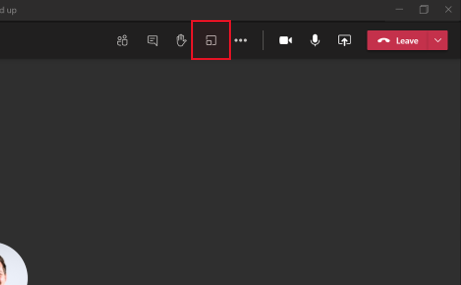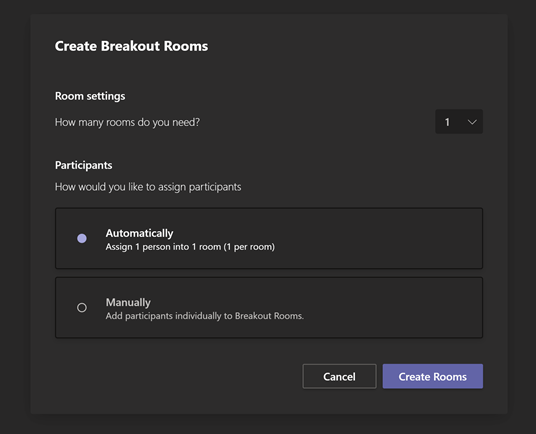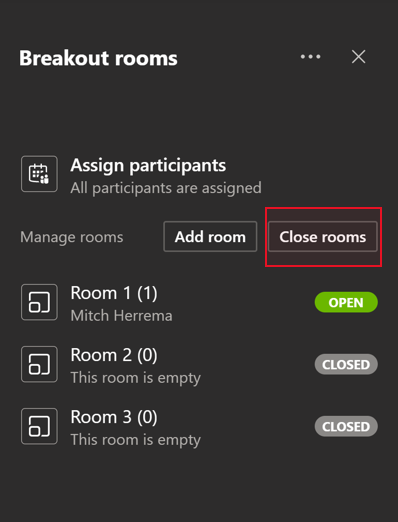How to Use Breakout Rooms in Microsoft Teams
Breakout rooms serve to break larger meetings out into small groups. They are especially useful in educational settings, for online training, corporate events, or larger meetings with committees or brainstorming sessions.
Breakout Rooms
When meeting with large groups, it can be challenging to create meaningful connections or to facilitate brainstorming. Microsoft has introduced Breakout Rooms to Teams, which allows meeting organizers to divide meetings into smaller groups to enable further discussion. In fact, up to 50 breakout rooms can be created, and the organizer can choose to assign participants into rooms either automatically or manually.
Breakout rooms are Teams meetings in themselves, so all the features you know and love about Teams are available to you inside of a breakout room. For example, you can choose the background in together mode for your breakout discussion. You can also collaborate on a file that can be shared back in the main meeting.
Create Your Breakout Rooms
To use breakout rooms, first make sure you are using the latest version of Teams by clicking your profile picture at the top of the app and then selecting, `check for updates`. You will also need to ensure the new meeting experience is enabled by checking in `Settings` -> `General` -> Turn on `New Meeting Experience.’ Only the meeting organizer can start a breakout room and the organizer must be in the desktop client. Also, this feature is only available in a scheduled meeting.
While you are in a meeting, select this small icon on your top menu bar:

Once you select this icon, you’ll be prompted to configure your breakout rooms by selecting how many rooms you want and how you would like to assign participants. You can have Teams automatically assign participants to rooms, or you can manually assign attendees to a specific room. Attendees cannot choose what room to join nor can they move to a different room, only the organizer can move attendees around.

Features for the Organizer
The meeting organizer can easily view all the breakout rooms on the right panel on their screen. This panel allows for a variety of controls and functions, such as adding a room, renaming a room, or deleting a room. If the organizer clicks on a specific meeting room, they can view the attendees in that room and click to reassign them. The organizer can also join any of the breakout rooms, then simply select the `return` button on the top right corner to return to the main meeting.

Another useful feature is the Announcement function - simply click the ellipsis in the top right corner and click `Make an announcement` to send a message to all of the breakout rooms at once.

When the breakout session is over, the organizer can click `Close rooms` on the upper right-hand side of their screen to automatically close the breakout rooms and automatically bring all of the participants back to the main meeting.

Finally, the organizer can edit the settings of the breakout rooms to allow for things like allowing the participants to move freely back and forth to the main meeting or not. For many settings, a participant may need to jump back to the main meeting to ask a quick question.

Features for the Participants
Participants can move back and forth between their breakout room and the main meeting if the organizer allows it. While working in the breakout room, participants can collaborate as they normally would in Teams. They have access to a chat space exclusive to that room. Files can be uploaded to the chat to share and edit live. Files shared in this way will be stored in the 'Files' tab above the chat. Each breakout room has its own chat, which will be accessible after the meeting. While the organizer of breakout rooms needs to be on their desktop, participants can join from any device.
Conclusion
Breakout rooms are an exciting new feature for Microsoft Teams. They are a game-changer for educational settings and for organizations that host larger meetings. Microsoft is planning enhancements to this feature in the coming months, such as the ability to create and organize breakout rooms before the start of the meeting and enabling tags to easily group attendees. We look forward to making the most of this new feature!


Is Team Communication Holding You Back?
Find Out in Just 2 Minutes.
Take our quick scorecard to uncover communication gaps and hidden barriers within your team.




.jpeg)








